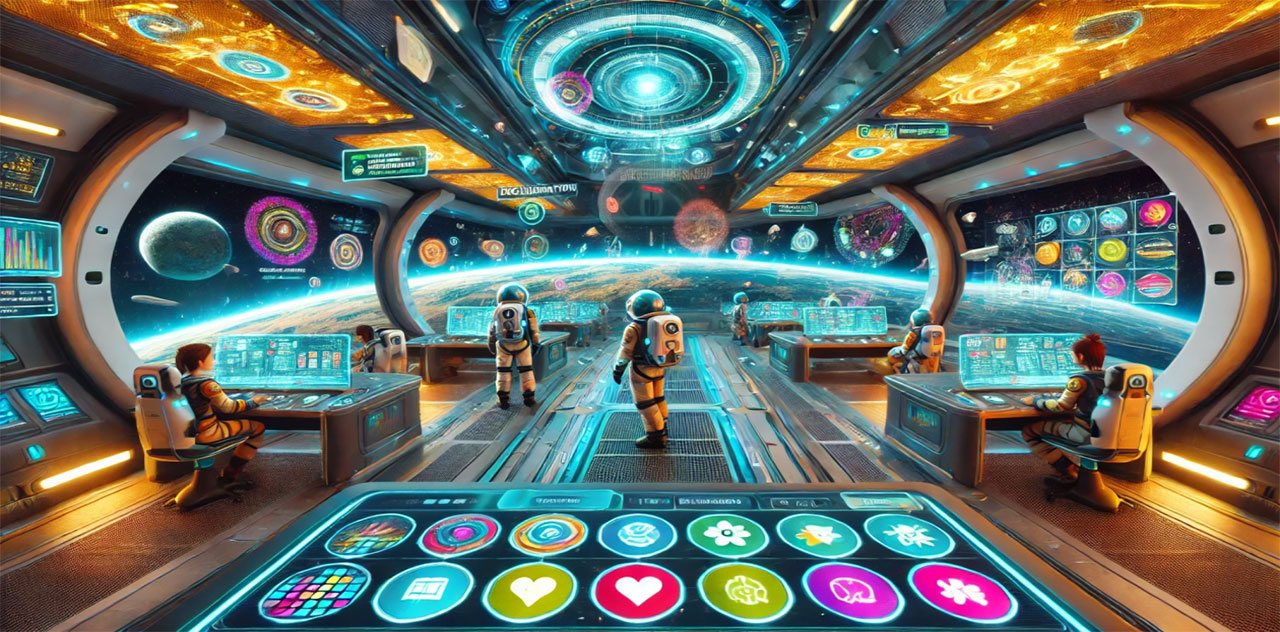In today's corporate landscape, engaging employees in continuous learning and development is crucial for organizational success. Traditional training methods often struggle to capture and maintain employee interest, leading to suboptimal outcomes. This is where gamification steps in, transforming mundane training programs into dynamic and interactive experiences. At CustomTechnologies Design Lab, we have been pioneering the use of gamification to create more engaging and effective corporate training solutions. Here's how we approach this innovative method.
The Power of Gamification
Gamification leverages game design elements in non-game contexts to motivate and increase user engagement. In the realm of corporate training, this translates to incorporating elements such as points, badges, leaderboards, and narrative storytelling into training programs. These elements tap into the human desire for competition, achievement, and social interaction, making learning more engaging and enjoyable.
Strategies for Successful Gamification
- Clear Objectives and Goals: Effective gamification starts with clear learning objectives. Each game element should align with these goals, ensuring that the fun aspects do not overshadow the educational content. At CustomTechnologies Design Lab, we work closely with clients to identify key learning outcomes and design gamified solutions that directly support these objectives.
- Meaningful Rewards: Rewards in gamification can range from simple points and badges to more significant incentives such as bonuses or extra time off. The key is to ensure that the rewards are meaningful and valued by employees. Our projects often incorporate a mix of intrinsic and extrinsic rewards to cater to diverse motivations.
- Progress Tracking and Feedback: Gamification allows for real-time tracking of progress and immediate feedback, which are crucial for effective learning. By using leaderboards and progress bars, we make it easy for employees to see their advancement and areas needing improvement, fostering a sense of accomplishment and continuous engagement.
- Narrative and Storytelling: Integrating a compelling narrative into training modules can significantly enhance engagement. Storytelling makes the learning experience more relatable and memorable. We craft immersive stories that not only entertain but also convey critical information and skills.
- Collaborative Learning: Gamification can foster teamwork and collaboration. Features like team-based challenges and group leaderboards encourage employees to work together towards common goals, enhancing communication and team spirit.
Case Studies from CustomTechnologies Design Lab
The Orb: In a recent project for a major pharmaceutical company, we developed "The Orb," a gamified training platform that transformed regulatory compliance and documentation training into an interactive space adventure game. Employees progressed through different levels, each representing a stage in the regulatory process, earning rewards and feedback along the way. This approach not only increased completion rates but also improved retention of critical compliance information.
FraudAlert: For a global bank, we created "FraudAlert," a multifaceted gamified training program. One edition was a role-play exercise as a live-action virtual reality experience, teaching employees how to detect fraudulent transactions and flag them. The other edition was an animated desktop-based game with the same focus on detecting and handling fraudulent transactions. The objective in both cases was to familiarize employees with the correct procedures for identifying and managing fraudulent activities in their everyday work life. These innovative approaches significantly improved the employees' ability to manage real-world scenarios effectively.
HR VR: For another pharmaceutical company, we developed "HR VR," an animated VR experience focusing on handling interpersonal dynamics and conflicts between employees. This gamified training module guided employees through various scenarios, teaching them the best practices for conflict resolution and effective communication within the workplace. The interactive nature of this training helped employees better understand and navigate complex interpersonal situations, leading to a more harmonious and productive work environment.
Looking Ahead
The potential of gamification in corporate training is immense. As technology evolves, I foresee the integration of more advanced elements such as augmented reality (AR) and virtual reality (VR), offering even more immersive and engaging training experiences. At CustomTechnologies Design Lab, we are committed to staying at the forefront of these innovations, continuously exploring new ways to make learning both effective and enjoyable.
Reflecting on our journey with gamification at CustomTechnologies Design Lab, I am inspired by the transformative impact it has had on our clients' training programs. It is incredibly rewarding to see employees more motivated, engaged, and better equipped with the skills they need to excel. As we continue to push the boundaries of what's possible, I am excited about the future of gamified learning and the endless possibilities it holds.
Are you ready to transform your corporate training with gamification? Let's collaborate to create engaging, effective, and enjoyable learning experiences for your employees.


